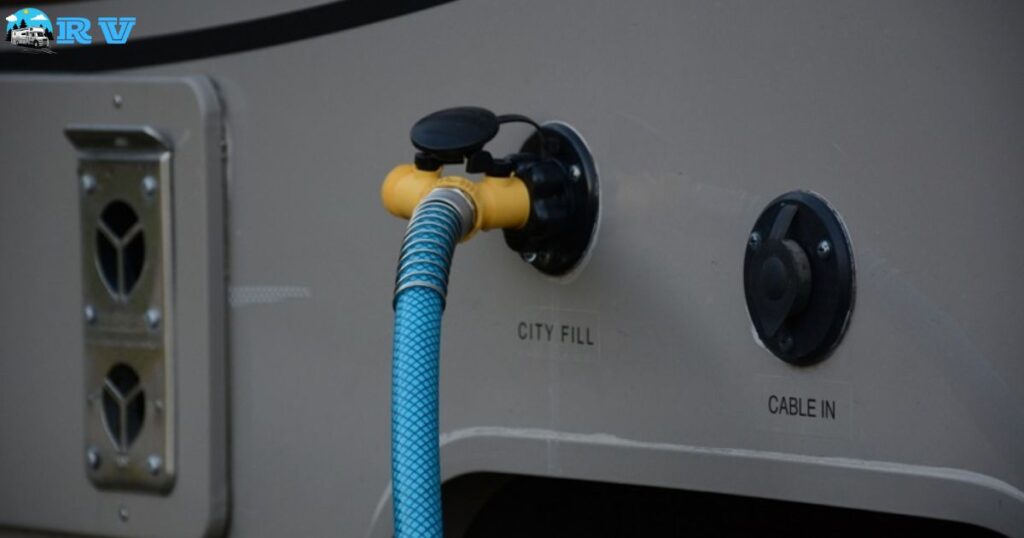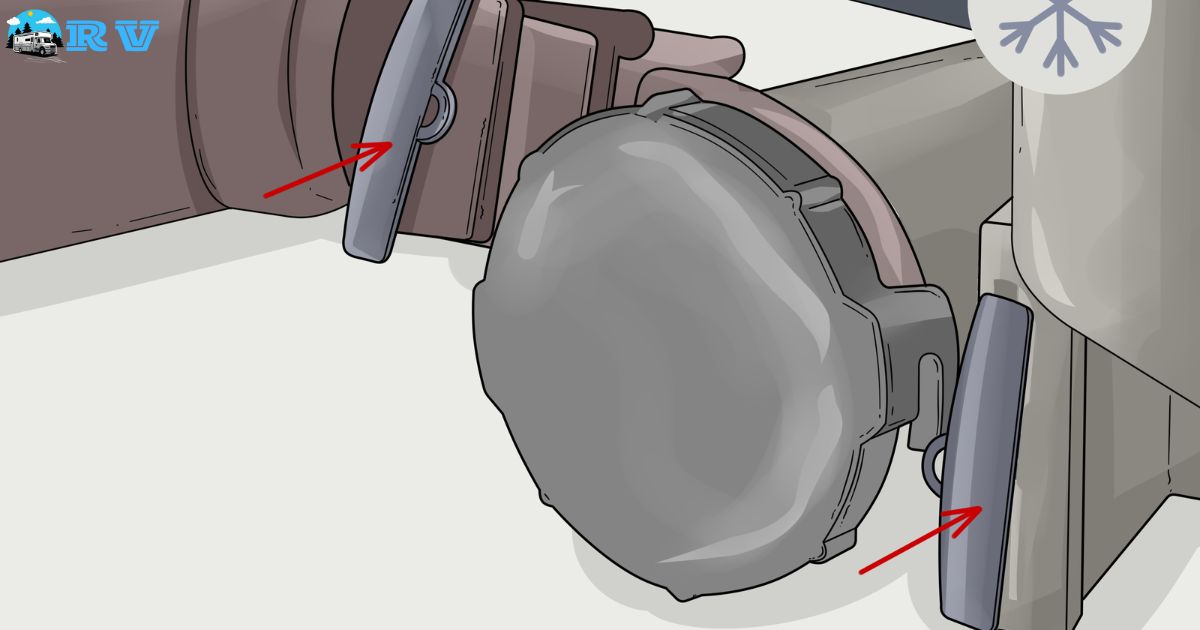PSI to blow out RV water lines refers to the amount of pressure, measured in pounds per square inch (psi), required to effectively remove water from the plumbing system of a recreational vehicle (RV). This process is essential to prevent freezing during cold weather and ensure the integrity of the RV’s water system.
Have you ever wondered, How much psi to blow out RV water lines? It’s a crucial question for RV owners, especially as winter approaches. Getting the right pressure is the key to safeguarding your RV’s plumbing from the damaging effects of freezing temperatures.
Typically, RV owners aim for a pressure range of 40 to 50 psi when blowing out their water lines. This range is considered safe and effective for removing all residual water, preventing costly repairs, and ensuring that your RV’s water system remains in top condition throughout the winter season.
Optimal PSI Levels for Blowing Out RV Water Lines
Blowing out water lines in an RV is a crucial step in preparing for winter. The process involves using an air compressor to clear any remaining water. The optimal PSI (pounds per square inch) for this task is typically between 40 to 50 PSI. It’s important to maintain this range to ensure the lines are cleared without causing damage.
Exceeding 50 PSI can be risky as it may lead to leaks or burst pipes, especially in older RV models. Consult your RV’s manual for specific recommendations. Staying within the recommended range ensures a safe and effective blowout. Always start with a lower PSI and gradually increase if necessary.
Recommended PSI for RV Winterization Water Line Clearing
Winterizing your RV is vital to protect it from freezing temperatures. The key part of this process is blowing out the water lines. For most RVs, a setting of 40 to 50 PSI on your air compressor is sufficient. This range is effective in clearing out all the water without straining the pipes.
Some newer RV models may tolerate slightly higher PSI, but caution is advised. Always check the manufacturer’s guidelines before proceeding. Remember, the goal is to clear the water lines, not to test their strength. A steady, moderate PSI ensures a thorough and safe clearing of your RV’s water system.
Determining the Right PSI for Safely Blowing Out Your RV’s Water Lines
Finding the correct PSI for your RV involves understanding your vehicle’s plumbing system. Generally, the safe range is between 40 to 50 PSI. However, this can vary based on the RV’s make and model. Older models might require a lower PSI due to more fragile piping.
| RV Model Year | Recommended PSI Range | Notes |
| Pre-2000 | 30-40 PSI | Older pipes may be more fragile |
| 2000-2010 | 40-45 PSI | Standard range for most models |
| Post-2010 | 45-50 PSI | Newer models can handle higher PSI |
Using a pressure regulator can help maintain the desired PSI. It’s a useful tool for precise adjustments. Remember, the main goal is to remove water without damaging the lines. Regular maintenance checks can also inform you about the suitable PSI for your specific RV model.
RV Water Line Maintenance Ideal PSI Settings for Air Compressors
Regular maintenance of your RV’s water lines includes understanding the ideal PSI settings for your air compressor. For most RVs, an air compressor set between 40 to 50 PSI is ideal for blowing out water lines. This range is generally safe for most plumbing systems found in RVs.
It’s important to use a regulated air compressor. Unregulated air flow can cause sudden pressure spikes, risking damage to the water lines. Regularly check your compressor’s settings before each use. Consistent use of the correct PSI will prolong the life of your RV’s plumbing system.
Using Correct PSI to Clear RV Water Lines

Clearing RV water lines is a straightforward process if done correctly. First, connect your air compressor to the RV’s water system. Ensure the compressor is set to the recommended PSI range, usually between 40 to 50 PSI. Start with the lowest setting and increase pressure gradually if needed.
Open each faucet in the RV one at a time, allowing the air to push any remaining water out. Begin with the faucet closest to the compressor and work your way through the RV. This methodical approach ensures all lines are thoroughly cleared. Repeat the process if necessary, ensuring all water is expelled.
Essential Tips for Blowing Out RV Water Lines PSI Considerations
When blowing out your RV water lines, several tips can make the process smoother. Firstly, always use a pressure regulator to avoid over-pressurizing the system. This tool is critical for maintaining the right PSI. Secondly, open each faucet and valve individually to ensure complete clearing of the lines.
Pay attention to the weather forecast. Ideally, blow out your water lines before the first freeze of the season. Also, remember to drain your water heater and bypass it before blowing out the lines. Following these steps ensures your RV’s water system is fully prepared for winter storage.
How Much PSI is Safe for Your RV Water Lines During Winter Prep?
Safety is paramount when preparing your RV for winter. The safest PSI for blowing out water lines is typically between 40 to 50 PSI. This range is effective yet gentle enough to prevent damage to your RV’s plumbing. Always err on the side of caution and start with a lower PSI.
If your RV is older or has a fragile plumbing system, consider using a lower PSI around 30 to 40. Always refer to your RV’s manual for specific guidelines. It’s better to be cautious and avoid the costly repairs that can result from over-pressurizing your water lines.
Effective PSI Ranges for Blowing Out RV Plumbing Systems
Different RV models may have specific requirements for the effective PSI range for blowing out plumbing systems and removing air out of RV water lines. For most modern RVs, a PSI range of 40 to 50 is effective. This range is usually sufficient to clear out all the water without causing any damage to the pipes.
For older RV models or those with known plumbing issues, a lower PSI may be more appropriate. Ranges between 30 to 40 PSI can be more suitable for these cases. Always check your RV’s manual or consult with a professional if you’re unsure about the appropriate PSI for your specific model.
Maximizing Safety and Efficiency Ideal PSI for RV Water Line Blow Out
Maximizing safety and efficiency during the blowout process is crucial. The ideal PSI for most RVs is in the 40 to 50 PSI range. This ensures efficient clearing of the water lines while minimizing the risk of damage. Use a pressure regulator to precisely control the PSI level.
Always monitor the pressure gauge while blowing out the lines. If you notice any fluctuations, adjust the compressor accordingly. Consistent pressure is key to a successful and safe blowout. Remember, the goal is to maintain your RV, not to put it at risk with excessive pressure.
Understanding PSI Requirements for Winterizing Your RV’s Water Lines
Understanding the PSI requirements is crucial for effectively winterizing your RV’s water lines. A general PSI range of 40 to 50 is usually adequate for most RV models. This range is sufficient to blow out all the water from the lines, preventing any freezing damage during the winter.
It’s also important to understand your specific RV model’s limitations. Some models might have unique requirements or limitations regarding PSI for water line clearing. Consult your RV’s manual or a professional to get accurate information. Proper understanding and application of these PSI requirements will ensure a trouble-free winterization process for your RV.
FAQs
What Is the Ideal PSI for Blowing Out RV Water Lines?
The ideal PSI for blowing out RV water lines is between 30 to 50 to ensure safety and prevent damage.
Can Exceeding 50 PSI Damage RV Water Lines?
Yes, exceeding 50 PSI can potentially damage RV water lines and plumbing fixtures.
Do I Need Special Equipment to Blow Out My RV Water Lines?
Yes, a reliable air compressor and a pressure regulator are essential for safely blowing out RV water lines.
Should I Check My RV’s Manual Before Blowing Out Water Lines?
Absolutely, always consult your RV’s manual for specific instructions and guidelines.
Conclusion
When blowing out RV water lines, the correct PSI is crucial. It’s generally recommended to use a PSI of 30 to 50. This range is safe for most RV plumbing systems, preventing damage to pipes and fittings. It’s important to remember that higher pressure is not better. Exceeding 50 PSI can cause harm to your RV’s water system.
Before starting the process, ensure you have a proper air compressor and pressure regulator. Always check your RV’s manual for specific guidelines. Regular maintenance, including proper blowing out of water lines, will keep your RV in good condition. By following these steps, you can enjoy stress-free travels without worrying about plumbing issues.











